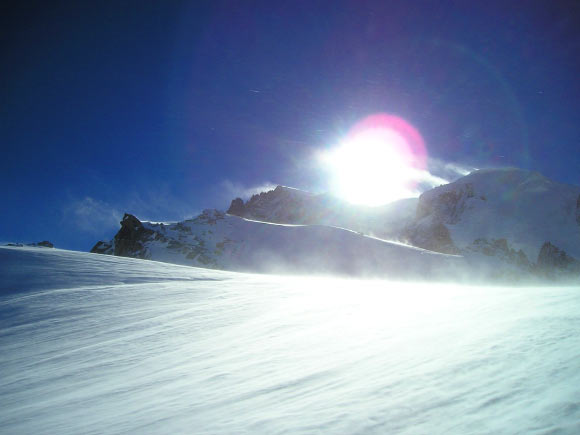A multinational team of researchers led by Dr Nathalie Cabrol of NASA Ames Research Center and the SETI Institute has recorded an unprecedented level of solar ultraviolet-B radiation equivalent to a UV index of 43.3, which is the highest ground value ever reported.

There are three types of ultraviolet radiation: UV-A (315-400nm), UV-B (280-315 nm) and UV-C (200-280 nm). The increased exposure to UV-B radiation has specific effects on human health, crops, terrestrial ecosystems, aquatic ecosystems, and biogeochemical cycles.
“These record-setting levels were not measured in Antarctica, where ozone holes have been a recurring problem for decades. This is in the tropics, in an area where there are small towns and villages,” Dr Cabrol said.
The measurements were made in the southern hemisphere summer of 2003 and 2004, using dosimeters of the European Light Dosimeter Network deployed on the summit of the Licancabur volcano (5,917 m) and at Laguna Blanca (4,340 m).
The combination of a midday Sun near the zenith, as well as the high elevation of these sites, produces higher irradiance levels because of naturally low ozone in such locations.
But these intensities of UV-B radiation (280 – 315 nm) are unprecedented.
“A UV index of 11 is considered extreme, and has reached up to 26 in nearby locations in recent years. But on December 29, 2003, we measured an index of 43. If you’re at a beach in the United States, you might experience an index of 8 or 9 during the summer, intense enough to warrant protection. You simply do not want to be outside when the index reaches 30 or 40,” explained Dr Cabrol, who is the first author of a paper published in the journal Frontiers in Environmental Science.
High UV-B exposure negatively affects the entire biosphere, not just humans.
It damages DNA, affects photosynthesis, and decreases the viability of eggs and larvae.
For these reasons, it is important to keep a close watch on UV flux levels.
“While this unsettling record might be the result of a ‘perfect storm’ of events, it could happen again, because the factors that caused it are not rare. What we need is more monitoring of the ozone changes in these areas. These fluxes, which are comparable to those of early Mars, are occurring in a populated area,” Dr Cabrol said.
_____
Cabrol NA et al. 2014. Record solar UV irradiance in the tropical Andes. Front. Environ. Sci. 2: 19; doi: 10.3389/fenvs.2014.00019







